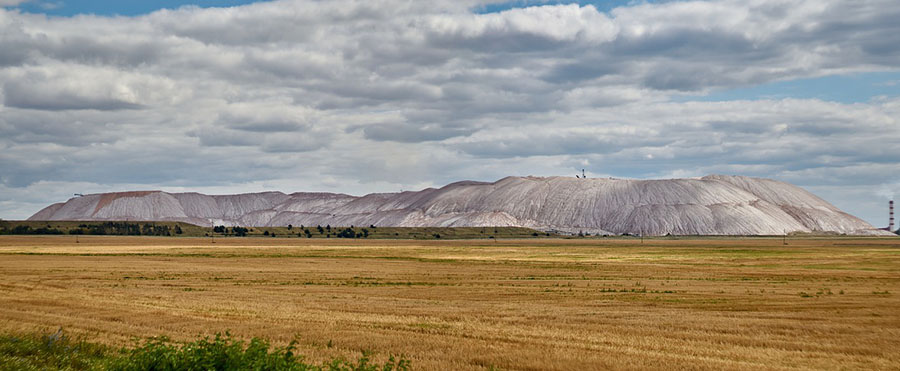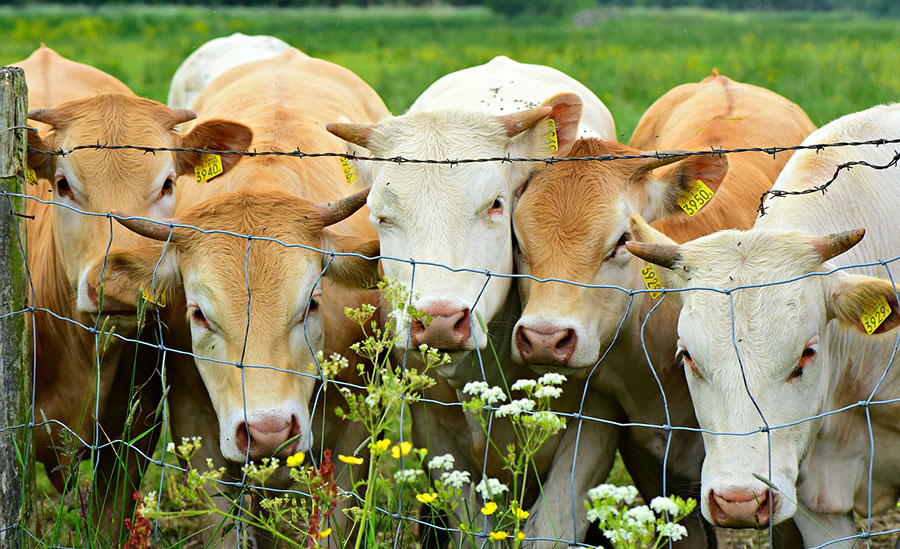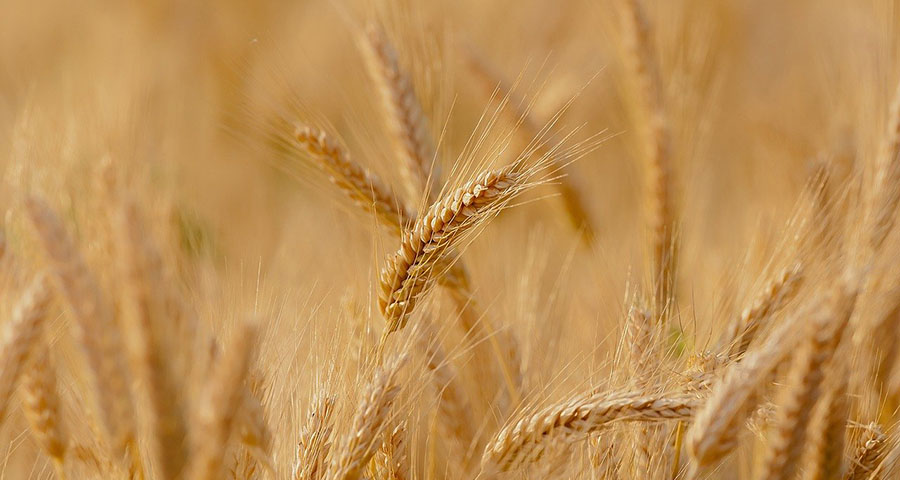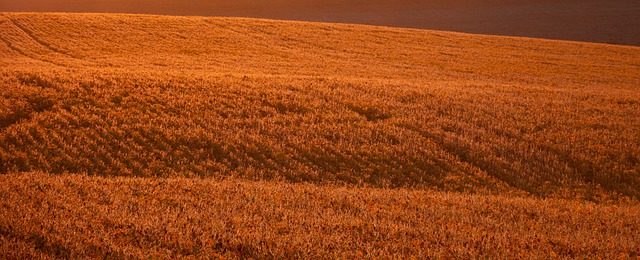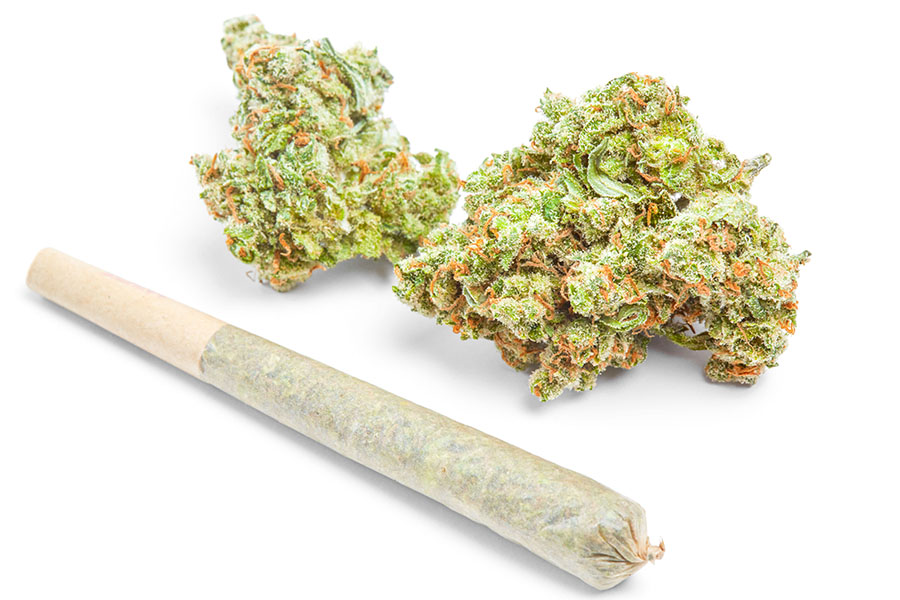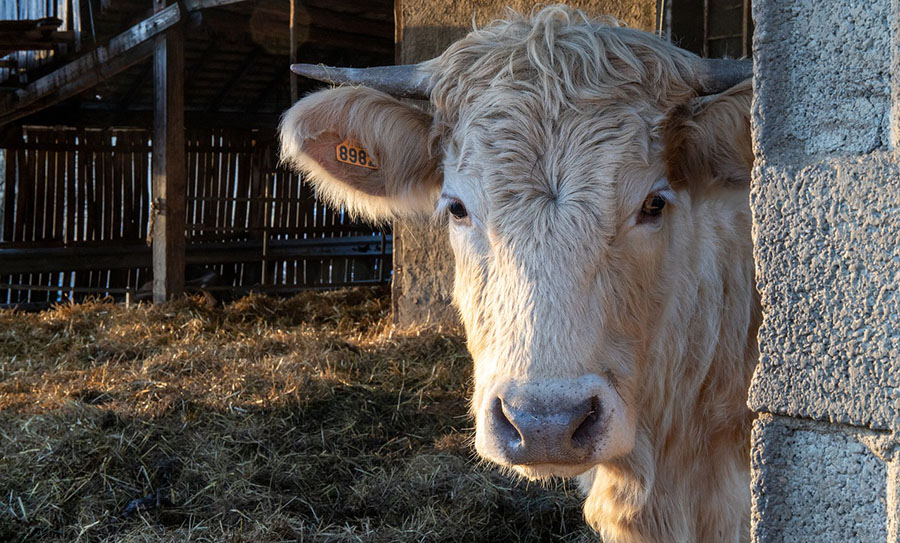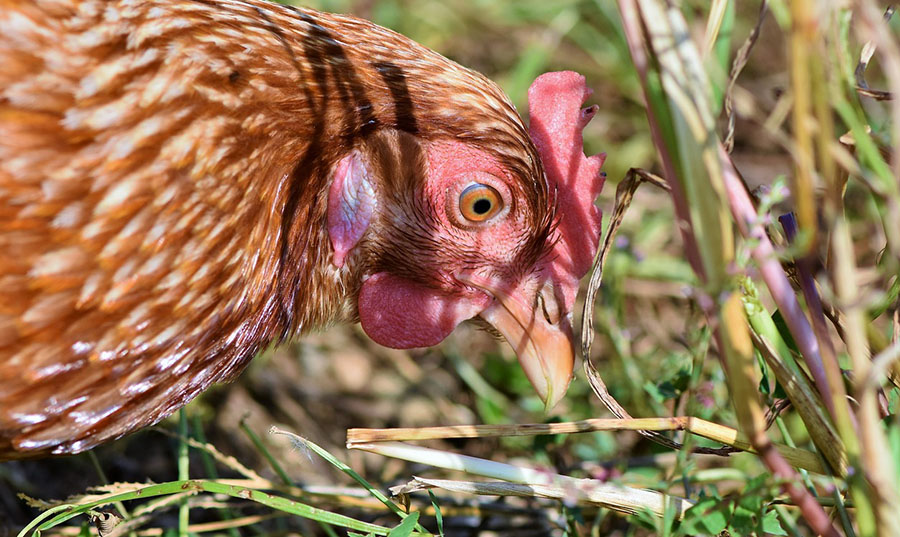TICKERS: AAA; ALLRF, , POT, MOS, URKA, NPK; AMHPF,
Jaret Anderson: Potash Developers Blaze Trail to Brazil
Interview
Source: George Mack of The Energy Report (6/9/11)
 "Brazil offers an ideal environment for potash developers," says Salman Partners Analyst Jaret Anderson. In this Energy Report exclusive, Jaret explains how its robust ag sector, favorable government and excellent infrastructure have driven several very attractive potash projects.
"Brazil offers an ideal environment for potash developers," says Salman Partners Analyst Jaret Anderson. In this Energy Report exclusive, Jaret explains how its robust ag sector, favorable government and excellent infrastructure have driven several very attractive potash projects.
The Energy Report: We know the general factors responsible for the growing need for fertilizers, but are there any growth drivers that aren't quite so obvious?
Jaret Anderson: Absolutely. Everybody knows the earth’s population needs more food, and there's a greater desire for increased meat consumption in a number of countries. Hundreds of millions of Chinese and Indians are making the transition from poverty to having some level of disposable income, and one of the first things people in that situation tend to demand is a higher protein content in their diet. One of the things that tends to get lost in the debate is the fact that in order to produce more protein we need a lot more arable land, or we need significantly more production from the arable land currently available.
In order to produce a kilogram (kg.) of beef, it takes about 7 kg. of feed, whether it's corn or soy or what have you. In order to produce a kilogram of pork, it takes 4 kg. of feed, and for poultry it takes 2 kg. of feed. So, as hundreds of millions of people in India and China and around the world continue to move toward higher protein content in their diets, there is a need to produce more feed grains on a pretty much finite arable land base in order to satisfy those demands.
TER: It sounds like making protein is a very inefficient process.
JA: Regardless of whether it is efficient or inefficient, it's what the world is demanding. I have no desire to give up my meat and I don’t think anybody else does either. There are ways we can achieve this with better farming techniques, such as more efficient use of fertilizers, genetically modified seed and superior irrigation. All of these things can help us improve crop yields and help us to offer everyone on the planet the food and protein they desire. So, moving yields up in less developed parts of the world to the levels that you see in North America and Western Europe, etc. is something that can be achieved over a longer period of time.
TER: Food producer risks would trickle down to the fertilizer producers. What are the risks?
JA: At the end of the day, the major risks are the impact of prices, which incorporate the supply and demand for the various crops, cattle, poultry, pork, etc. One macro-risk that could have a big impact on the agricultural system overall—and therefore on fertilizer producers and those who are trying to bring new fertilizer projects to market over the next number of years—is the political and economic debate surrounding ethanol.
A change in the political will to continue to subsidize ethanol in the United States could potentially have a significant impact on farm economics. Something like 40% of U.S. corn production is used to produce ethanol. A $0.45 per gallon subsidy currently goes toward the production of ethanol, and if that were to go away during this 2012 election season, it could hurt fertilizer producers.
TER: One Republican presidential candidate went to Iowa recently and made no bones about the need to reduce subsidies for ethanol.
JA: Yes, Minnesotan Tim Pawlenty made that statement pretty aggressively. Sarah Palin, whether she's in or out, can have an impact on this issue. She's saying some of the same sorts of things regarding the need to end all energy subsidies, including ethanol. So, it's a risk. I don't think it's something to lose a lot of sleep over, but it is certainly something that can change the debate and the economics for corn production and, ultimately, fertilizer products.
TER: In an industry report, you expressed some thoughts about the significant advantages of producing potash in South America versus Africa. What thesis are you presenting to your clients regarding these two areas?
JA: Transportation costs represent approximately 40% of the total delivered North American potash costs. That's another way of saying that location and infrastructure are critical elements for any prospective greenfield potash project. It's critical to think about how infrastructure and transportation costs play into the various projects whether they're located in Saskatchewan, Canada, Brazil, Ethiopia, Eritrea, the Republic of Congo or wherever else these projects are being developed.
Brazil, in my view, is a particularly interesting location. It's the second-largest consumer of potash in the world today, and it has posted some of the best potash demand growth over the last 10 years. In addition, Brazil has a number of positive factors going for it. It has a well-developed infrastructure system, including modern roads, a well-developed rail network, access to water and power. By comparison, a number of projects in Africa have very interesting deposits but face significant challenges with respect to infrastructure, including a lack of access to rail, water, power and ports.
TER: Potash stocks are taking a well-deserved breather after phenomenal returns over the past 52 weeks. Is this an opportunity now for phosphates to catch up?
JA: There has been a big uptick in interest in phosphate projects over the last six months. I definitely receive more incoming calls on them than I did a year ago. I believe that phosphate projects do offer some advantages over potash projects because they are less expensive to build, and they're generally brought to market faster than the five-plus years it can take to bring a potash project to market. Overall, though, the potash industry has offered much better returns over the cycle than phosphates.
PotashCorp (TSX:POT; NYSE:POT)—one of the largest fertilizer companies in the world—has generated an average gross margin over the past five years of 63% in its potash business. Its phosphate business, by comparison, has only generated an average gross margin of about 22%. I think that is the order of magnitude you can expect in potash versus phosphate over the cycle. That makes potash the more attractive business over the long term, but it doesn't mean there aren't attractive phosphate projects out there that can generate decent returns for investors.
TER: Companies vary how they report their resources. Investors would like to understand resource values on an apples-to-apples basis, specifically when it comes to understanding recoverable potassium chloride versus total tonnage of ore. This can have significant implications, can it not?
JA: It can. A number of these greenfield potash companies have taken different approaches with respect to the way they have chosen to report their resource figures. As you point out, some companies have reported the total number of tons of potash-bearing rock in the ground while others have been more conservative and report the amount of potash that they expect to be able to extract after accounting for the grade of the rock, allowances for losses during extraction and further losses during processing.
In general, we have found that companies with assets in North America have been more conservative in the way they have presented their figures than the companies with assets in Africa. In any event, when comparing two potash resources, investors have to take into consideration things like the resource grade, mineralization depth, existing infrastructure and the viability of moving forward over the long term.
In our opinion, too many of these companies have been painted with the same brush. Ultimately, not all of these projects are likely to make it to production. You have to consider carefully which of these projects have the most desirable characteristics and the lowest risk when making an investment decision.
TER: Does the Street typically give the recoverable potash resource reporter a premium?
JA: Not from what I’m seeing when I look at my comps, and that's where I think there are some opportunities. To me, a company such as Western Potash Corp. (TSX.V:WPX), which is located in Saskatchewan and has a very large resource, has been conservative in the way it has presented its information compared to a lot of its peers in the greenfield potash space. Yet, it's trading at a discount in terms of absolute EV or market cap to some of the companies operating in Africa with a fraction of the resource who have perhaps been less conservative in the way they've presented the figures. So, I think there are some opportunities there, and I think that a company like Western Potash does warrant a second look.
TER: Can a prolific producer command a premium price, or is the idea to get a better margin with lower infrastructure and transportation costs? Or is it both?
JA: In an ideal world, you want a large potash resource located close to a large source of end demand with good infrastructure already in place and a stable geopolitical environment. In our view, the projects in Saskatchewan and Brazil check most of these boxes. Brazil is particularly interesting in that it offers well-developed infrastructure, a stable political environment and very strong growth rates for potash demand going forward. If I had the ability to create a potash deposit located anywhere in the world, I would choose to locate it in Brazil. Brazil is likely to overtake China as the world’s largest consumer of potash sometime in the next decade. In my view, it offers the best combination of end-user demand, well-developed infrastructure, and an accommodative and stable government.
Something to keep in mind is the very long-life nature of these projects. When you're building an operation that is expected to run for several decades, you need to think strategically about how the world is likely to unfold. Brazil is currently the world’s number one exporter of beef, chicken, sugar, coffee and orange juice. Given its very large undeveloped arable land base, those factors are only likely to go in Brazil's favor. So, in my view, locating in a country with great agricultural promise going forward, a stable government, and good infrastructure makes a lot of sense.
TER: Could you give me a specific example?
JA: Sure, take the example of Verde Potash (TSX.V:NPK) (formerly Amazon Mining Holding), which has a very interesting greenfield potash project located in Brazil. Verde plans to produce a new type of potash in an area called Minas Gerais, a state with a very high level of agricultural production close to a number of fertilizer blenders that buy fertilizer today from companies such as PotashCorp, The Mosaic Company (NYSE:MOS), and OAO Uralkali (RTS:URKA, MICEX:URKA, LSE:URKA). Verde is likely to face freight costs of only about $45/ton to truck product from its location a couple hundred kilometers (km.) to the fertilizer blenders in Minas Gerais and Mato Grasso states. A supplier today in Saskatchewan such as PotashCorp or Mosaic is likely to face transportation costs of $35/ton to move its product from Saskatchewan to the port in Vancouver, another $35/ton via ship from Vancouver to the port in Brazil, and another $80-$115/ton to move the product from the port in Brazil to the inland location where the fertilizer blenders actually need the product. The total cost of end-to-end transportation is somewhere between $150 and $185/ton. So Verde's $45/ton transportation cost gives it a very material competitive advantage. It really can't be frittered away over time unless you believe rail and transportation costs are going to go down over the years, which is highly unlikely. This is an enduring competitive advantage.
TER: I am looking at Verde under its old ticker symbol as Amazon Mining, and its total return for the past 52 weeks is 383%. It's given back about 14% over the past three months. Is there much left on the upside?
JA: Verde has plenty of upside left. I have a target of $11.50 per share, and you're talking a return of 64% to my target. I believe there is certainly another $3–$4 left in the stock over the next 12 months. If the company's R&D initiatives show positive developments, the stock has much, much more upside from here.
TER: Is there another company you might discuss?
JA: If you want to play in the Danakhil Basin in Ethiopia, I would steer someone toward Ethiopian Potash Corp (TSX.V:FED TSX.V:FED.WT), which has a land package located directly adjacent to Allana Potash (TSX.V:AAA; OTCQX:ALLRF) and yet has a market cap at roughly one-third that of Allana's. If you’re bullish on the Ethiopian plays, they're not all the same. Some are less expensive than others, and I think that Ethiopian Potash is an attractively valued name.
TER: Isn't the Danakhil project 600 km from a port?
JA: It's roughly 600 km by road to the nearest available port that it can use, which is Djibouti. Closer ports exist in Eritrea, but political problems limit access to those ports. Eritrea and Ethiopia have had troubled relations in the past. So, projects located in Ethiopia may have trouble gaining access to the ports in Eritrea. That could be resolved over time, but right now it looks like that's going to be a challenge.
TER: Sticking with that transportation theme for a moment, you're obviously very positive on Western Potash, but it's 1,730 km to port.
JA: Yes, it's a long ways away from the port in Vancouver. The difference is that there's well-established rail infrastructure in place, which has been transporting large quantities of potash from Saskatchewan to Vancouver for several decades. The risk and the cost in moving potash out of Saskatchewan is much, much lower than I think you're going to find in other parts of the world. So, it's a large distance, but the infrastructure is largely in place to make that feasible.
TER: Thank you for your time. Best wishes.
JA: Thank you.
Jaret Anderson covers the fertilizer, agriculture and chemical sectors and brings over 10 years of research experience in the basic materials space to the Salman Partners research team. Jaret spent seven years at UBS Securities Canada covering paper & forest, fertilizer, chemical, gold and steel names prior to joining Salman Partners. In 2006 he was ranked #1 for earnings estimates accuracy in the paper and forest sector by Starmine, and in 2005 he was ranked #2 for quality of written reports (also in the paper & forest sector) by Brendan Woods International. Jaret holds a B.Com. (with Honors) from the University of British Columbia and became a CFA charterholder in 2000.
Want to read more exclusive Energy Report interviews like this? Sign up for our free e-newsletter, and you'll learn when new articles have been published. To see a list of recent interviews with industry analysts and commentators, visit our Exclusive Interviews page.
DISCLOSURE:
1) George Mack of The Energy Report conducted this interview. He personally and/or his family own shares of the following companies mentioned in this interview: None.
2) The following companies mentioned in the interview are sponsors of The Energy Report: Verde Potash and Allana Potash.
3) Jaret Anderson: I personally and/or my family own shares of the following companies mentioned in this interview: Verde Potash Plc. I personally and/or my family am paid by the following companies mentioned in this interview: None.
Jaret Anderson: Absolutely. Everybody knows the earth’s population needs more food, and there's a greater desire for increased meat consumption in a number of countries. Hundreds of millions of Chinese and Indians are making the transition from poverty to having some level of disposable income, and one of the first things people in that situation tend to demand is a higher protein content in their diet. One of the things that tends to get lost in the debate is the fact that in order to produce more protein we need a lot more arable land, or we need significantly more production from the arable land currently available.
In order to produce a kilogram (kg.) of beef, it takes about 7 kg. of feed, whether it's corn or soy or what have you. In order to produce a kilogram of pork, it takes 4 kg. of feed, and for poultry it takes 2 kg. of feed. So, as hundreds of millions of people in India and China and around the world continue to move toward higher protein content in their diets, there is a need to produce more feed grains on a pretty much finite arable land base in order to satisfy those demands.
TER: It sounds like making protein is a very inefficient process.
JA: Regardless of whether it is efficient or inefficient, it's what the world is demanding. I have no desire to give up my meat and I don’t think anybody else does either. There are ways we can achieve this with better farming techniques, such as more efficient use of fertilizers, genetically modified seed and superior irrigation. All of these things can help us improve crop yields and help us to offer everyone on the planet the food and protein they desire. So, moving yields up in less developed parts of the world to the levels that you see in North America and Western Europe, etc. is something that can be achieved over a longer period of time.
TER: Food producer risks would trickle down to the fertilizer producers. What are the risks?
JA: At the end of the day, the major risks are the impact of prices, which incorporate the supply and demand for the various crops, cattle, poultry, pork, etc. One macro-risk that could have a big impact on the agricultural system overall—and therefore on fertilizer producers and those who are trying to bring new fertilizer projects to market over the next number of years—is the political and economic debate surrounding ethanol.
A change in the political will to continue to subsidize ethanol in the United States could potentially have a significant impact on farm economics. Something like 40% of U.S. corn production is used to produce ethanol. A $0.45 per gallon subsidy currently goes toward the production of ethanol, and if that were to go away during this 2012 election season, it could hurt fertilizer producers.
TER: One Republican presidential candidate went to Iowa recently and made no bones about the need to reduce subsidies for ethanol.
JA: Yes, Minnesotan Tim Pawlenty made that statement pretty aggressively. Sarah Palin, whether she's in or out, can have an impact on this issue. She's saying some of the same sorts of things regarding the need to end all energy subsidies, including ethanol. So, it's a risk. I don't think it's something to lose a lot of sleep over, but it is certainly something that can change the debate and the economics for corn production and, ultimately, fertilizer products.
TER: In an industry report, you expressed some thoughts about the significant advantages of producing potash in South America versus Africa. What thesis are you presenting to your clients regarding these two areas?
JA: Transportation costs represent approximately 40% of the total delivered North American potash costs. That's another way of saying that location and infrastructure are critical elements for any prospective greenfield potash project. It's critical to think about how infrastructure and transportation costs play into the various projects whether they're located in Saskatchewan, Canada, Brazil, Ethiopia, Eritrea, the Republic of Congo or wherever else these projects are being developed.
Brazil, in my view, is a particularly interesting location. It's the second-largest consumer of potash in the world today, and it has posted some of the best potash demand growth over the last 10 years. In addition, Brazil has a number of positive factors going for it. It has a well-developed infrastructure system, including modern roads, a well-developed rail network, access to water and power. By comparison, a number of projects in Africa have very interesting deposits but face significant challenges with respect to infrastructure, including a lack of access to rail, water, power and ports.
TER: Potash stocks are taking a well-deserved breather after phenomenal returns over the past 52 weeks. Is this an opportunity now for phosphates to catch up?
JA: There has been a big uptick in interest in phosphate projects over the last six months. I definitely receive more incoming calls on them than I did a year ago. I believe that phosphate projects do offer some advantages over potash projects because they are less expensive to build, and they're generally brought to market faster than the five-plus years it can take to bring a potash project to market. Overall, though, the potash industry has offered much better returns over the cycle than phosphates.
PotashCorp (TSX:POT; NYSE:POT)—one of the largest fertilizer companies in the world—has generated an average gross margin over the past five years of 63% in its potash business. Its phosphate business, by comparison, has only generated an average gross margin of about 22%. I think that is the order of magnitude you can expect in potash versus phosphate over the cycle. That makes potash the more attractive business over the long term, but it doesn't mean there aren't attractive phosphate projects out there that can generate decent returns for investors.
TER: Companies vary how they report their resources. Investors would like to understand resource values on an apples-to-apples basis, specifically when it comes to understanding recoverable potassium chloride versus total tonnage of ore. This can have significant implications, can it not?
JA: It can. A number of these greenfield potash companies have taken different approaches with respect to the way they have chosen to report their resource figures. As you point out, some companies have reported the total number of tons of potash-bearing rock in the ground while others have been more conservative and report the amount of potash that they expect to be able to extract after accounting for the grade of the rock, allowances for losses during extraction and further losses during processing.
In general, we have found that companies with assets in North America have been more conservative in the way they have presented their figures than the companies with assets in Africa. In any event, when comparing two potash resources, investors have to take into consideration things like the resource grade, mineralization depth, existing infrastructure and the viability of moving forward over the long term.
In our opinion, too many of these companies have been painted with the same brush. Ultimately, not all of these projects are likely to make it to production. You have to consider carefully which of these projects have the most desirable characteristics and the lowest risk when making an investment decision.
TER: Does the Street typically give the recoverable potash resource reporter a premium?
JA: Not from what I’m seeing when I look at my comps, and that's where I think there are some opportunities. To me, a company such as Western Potash Corp. (TSX.V:WPX), which is located in Saskatchewan and has a very large resource, has been conservative in the way it has presented its information compared to a lot of its peers in the greenfield potash space. Yet, it's trading at a discount in terms of absolute EV or market cap to some of the companies operating in Africa with a fraction of the resource who have perhaps been less conservative in the way they've presented the figures. So, I think there are some opportunities there, and I think that a company like Western Potash does warrant a second look.
TER: Can a prolific producer command a premium price, or is the idea to get a better margin with lower infrastructure and transportation costs? Or is it both?
JA: In an ideal world, you want a large potash resource located close to a large source of end demand with good infrastructure already in place and a stable geopolitical environment. In our view, the projects in Saskatchewan and Brazil check most of these boxes. Brazil is particularly interesting in that it offers well-developed infrastructure, a stable political environment and very strong growth rates for potash demand going forward. If I had the ability to create a potash deposit located anywhere in the world, I would choose to locate it in Brazil. Brazil is likely to overtake China as the world’s largest consumer of potash sometime in the next decade. In my view, it offers the best combination of end-user demand, well-developed infrastructure, and an accommodative and stable government.
Something to keep in mind is the very long-life nature of these projects. When you're building an operation that is expected to run for several decades, you need to think strategically about how the world is likely to unfold. Brazil is currently the world’s number one exporter of beef, chicken, sugar, coffee and orange juice. Given its very large undeveloped arable land base, those factors are only likely to go in Brazil's favor. So, in my view, locating in a country with great agricultural promise going forward, a stable government, and good infrastructure makes a lot of sense.
TER: Could you give me a specific example?
JA: Sure, take the example of Verde Potash (TSX.V:NPK) (formerly Amazon Mining Holding), which has a very interesting greenfield potash project located in Brazil. Verde plans to produce a new type of potash in an area called Minas Gerais, a state with a very high level of agricultural production close to a number of fertilizer blenders that buy fertilizer today from companies such as PotashCorp, The Mosaic Company (NYSE:MOS), and OAO Uralkali (RTS:URKA, MICEX:URKA, LSE:URKA). Verde is likely to face freight costs of only about $45/ton to truck product from its location a couple hundred kilometers (km.) to the fertilizer blenders in Minas Gerais and Mato Grasso states. A supplier today in Saskatchewan such as PotashCorp or Mosaic is likely to face transportation costs of $35/ton to move its product from Saskatchewan to the port in Vancouver, another $35/ton via ship from Vancouver to the port in Brazil, and another $80-$115/ton to move the product from the port in Brazil to the inland location where the fertilizer blenders actually need the product. The total cost of end-to-end transportation is somewhere between $150 and $185/ton. So Verde's $45/ton transportation cost gives it a very material competitive advantage. It really can't be frittered away over time unless you believe rail and transportation costs are going to go down over the years, which is highly unlikely. This is an enduring competitive advantage.
TER: I am looking at Verde under its old ticker symbol as Amazon Mining, and its total return for the past 52 weeks is 383%. It's given back about 14% over the past three months. Is there much left on the upside?
JA: Verde has plenty of upside left. I have a target of $11.50 per share, and you're talking a return of 64% to my target. I believe there is certainly another $3–$4 left in the stock over the next 12 months. If the company's R&D initiatives show positive developments, the stock has much, much more upside from here.
TER: Is there another company you might discuss?
JA: If you want to play in the Danakhil Basin in Ethiopia, I would steer someone toward Ethiopian Potash Corp (TSX.V:FED TSX.V:FED.WT), which has a land package located directly adjacent to Allana Potash (TSX.V:AAA; OTCQX:ALLRF) and yet has a market cap at roughly one-third that of Allana's. If you’re bullish on the Ethiopian plays, they're not all the same. Some are less expensive than others, and I think that Ethiopian Potash is an attractively valued name.
TER: Isn't the Danakhil project 600 km from a port?
JA: It's roughly 600 km by road to the nearest available port that it can use, which is Djibouti. Closer ports exist in Eritrea, but political problems limit access to those ports. Eritrea and Ethiopia have had troubled relations in the past. So, projects located in Ethiopia may have trouble gaining access to the ports in Eritrea. That could be resolved over time, but right now it looks like that's going to be a challenge.
TER: Sticking with that transportation theme for a moment, you're obviously very positive on Western Potash, but it's 1,730 km to port.
JA: Yes, it's a long ways away from the port in Vancouver. The difference is that there's well-established rail infrastructure in place, which has been transporting large quantities of potash from Saskatchewan to Vancouver for several decades. The risk and the cost in moving potash out of Saskatchewan is much, much lower than I think you're going to find in other parts of the world. So, it's a large distance, but the infrastructure is largely in place to make that feasible.
TER: Thank you for your time. Best wishes.
JA: Thank you.
Jaret Anderson covers the fertilizer, agriculture and chemical sectors and brings over 10 years of research experience in the basic materials space to the Salman Partners research team. Jaret spent seven years at UBS Securities Canada covering paper & forest, fertilizer, chemical, gold and steel names prior to joining Salman Partners. In 2006 he was ranked #1 for earnings estimates accuracy in the paper and forest sector by Starmine, and in 2005 he was ranked #2 for quality of written reports (also in the paper & forest sector) by Brendan Woods International. Jaret holds a B.Com. (with Honors) from the University of British Columbia and became a CFA charterholder in 2000.
Want to read more exclusive Energy Report interviews like this? Sign up for our free e-newsletter, and you'll learn when new articles have been published. To see a list of recent interviews with industry analysts and commentators, visit our Exclusive Interviews page.
DISCLOSURE:
1) George Mack of The Energy Report conducted this interview. He personally and/or his family own shares of the following companies mentioned in this interview: None.
2) The following companies mentioned in the interview are sponsors of The Energy Report: Verde Potash and Allana Potash.
3) Jaret Anderson: I personally and/or my family own shares of the following companies mentioned in this interview: Verde Potash Plc. I personally and/or my family am paid by the following companies mentioned in this interview: None.



